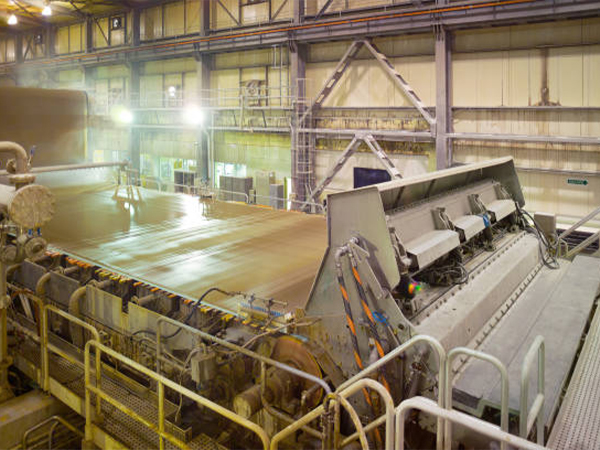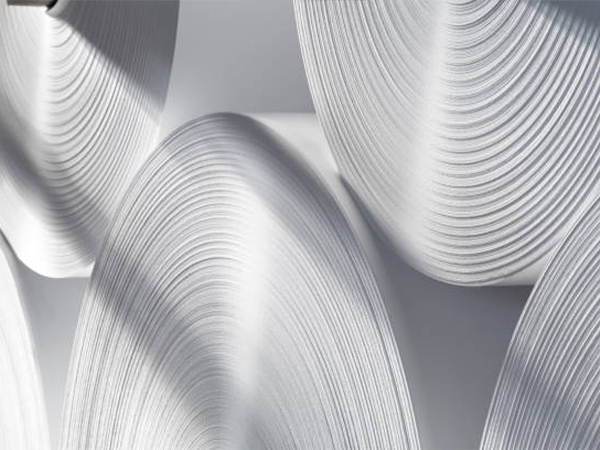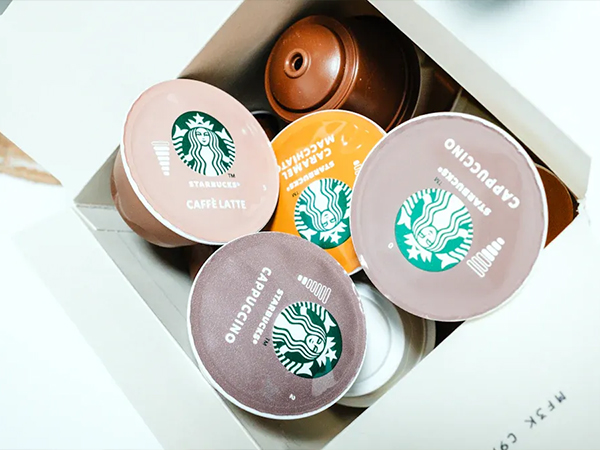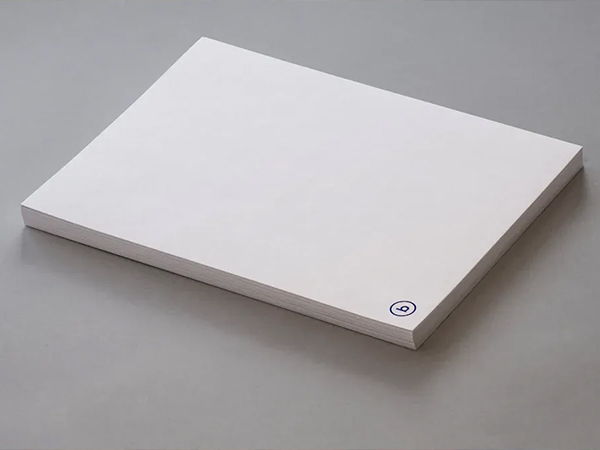
Dry strength additives give you the power to boost the durability and performance of paper products. You gain greater control over meeting demanding specifications and cutting production costs. These additives strengthen the paper structure, reduce breakage, and lower waste, so you save on materials and improve efficiency. By using dry strength additives, you can incorporate more recycled fibers, supporting your sustainability goals.
| Application Area | Impact of Dry Strength Additives |
|---|---|
| Packaging Paper | Enhances strength and durability, critical for transportation and handling, especially in e-commerce. |
| Specialty Paper | Provides enhanced strength, tear resistance, and durability for high-value products like security and filter paper. |
| Tissue Paper | Balances softness and strength, essential for hygiene products, with increased demand post-health crises. |
| End-User Segments | Includes paper mills and packaging industries, driving the need for improved product quality and performance. |
Key Takeaways
- Dry strength additives enhance the durability and performance of paper products, making them stronger and more resistant to breakage.
- Using these additives allows for greater incorporation of recycled fibers, supporting sustainability goals and reducing production costs.
- Different types of dry strength additives, such as cationic starch and polyacrylamide, improve paper strength through various bonding mechanisms.
- Optimizing the dosage of dry strength additives is crucial for achieving the best paper properties and minimizing waste.
- Integrating dry strength additives into the papermaking process can lead to smoother machine operation and higher production efficiency.
- Choosing eco-friendly additives helps reduce environmental impact while maintaining high product quality.
- Regular testing and monitoring of chemical combinations ensure the desired paper properties without negative side effects.
- Staying informed about innovations in dry strength additives can help you meet evolving market demands and sustainability standards.
Dry Strength Additives Overview
Definition
You encounter dry strength additives as essential chemical agents in papermaking. These substances improve the mechanical properties of paper, making your products stronger and more durable. Manufacturers use dry strength additives across a wide range of paper and board grades, including those made from virgin, mechanical, recycled, and mixed fibers.
- Dry strength additives help you optimize the strength of paper under dry conditions.
- These agents differ from wet strength additives because they focus on resistance to tearing, breaking, and stretching when the paper is dry.
- Most dry strength additives are polymers or resins that bond with cellulose fibers, creating a robust fiber network.
Purpose
You rely on dry strength additives for several key reasons:
- Improved paper strength: You enhance tensile strength, tear resistance, and internal bonding, which leads to a more durable product.
- Increased paper quality: You elevate the quality of your paper, especially for products that require high strength and durability.
- Reduced production costs: You lower the amount of pulp needed, which saves money and reduces your environmental footprint.
Tip: When you use dry strength additives, you can achieve higher performance with less raw material. This approach supports both cost efficiency and sustainability.
Role in Papermaking
You play a crucial role in the papermaking process by selecting and applying dry strength additives. These water-soluble polyelectrolytes increase the internal bond strength and tensile strength of your paper. You boost the relative bonded area between fibers, which improves the overall strength of the sheet.
Common types of dry strength additives include cationic starch, carboxymethyl cellulose, and guar gum derivatives. By integrating these agents, you enhance the durability and performance of your paper products, making them suitable for demanding applications.
How They Work
Mechanisms
Fiber Bonding
You rely on fiber bonding as the primary way to improve paper strength. When you add dry strength additives, you create stronger connections between cellulose fibers. These additives work at the molecular level to reinforce the paper sheet.
- Cross-linking of cellulose or hemicellulose through covalent bonds strengthens the paper structure.
- Chemical lattices form between fibers, which increases the number of contact points and boosts overall durability.
- Some additives self-crosslink, creating an insoluble network that helps the paper retain strength even after exposure to moisture.
- Reactive sites on the additives bond with hydroxyl groups on the fibers, forming strong ionic and hydrogen bonds.
- Polyethyleneimine and similar agents create a cross-linking network, improving both wet and dry strength.
Note: The effectiveness of these mechanisms depends on the polymeric nature, water solubility, and cationic character of the additive.
Surface Effects
You also benefit from surface effects when using dry strength additives. These agents interact with the fiber surface, enhancing adhesion and improving the paper’s mechanical properties.
- Additives such as modified starches and polyacrylamide adsorb onto fiber surfaces, increasing the number of bonding sites.
- The surface charge of the fibers influences how well the additives bind, which affects the final strength of the paper.
- High molecular weight additives mainly interact with the fiber surface, as their size limits penetration into the fiber wall.
Interaction with Fibers
You see a range of interaction mechanisms between dry strength additives and paper fibers. The table below summarizes how different additives work at the molecular level:
| Additive Type | Interaction Mechanism |
|---|---|
| Modified Starches | Enhance fiber bonding through surface interactions, optimizing mechanical properties. |
| Polyacrylamide | Strengthens paper by adsorbing onto fiber surfaces. |
| Polyvinylamine (PVAm) | Provides both wet and dry strength through cationic charge interactions with fibers. |
| Cationic Starch (CS) | Improves retention by enhancing adsorption via electrostatic attraction. |
| Polyvinyl Alcohol (PVA) | Reinforces cellulose fibers through strong binding with hydroxyl groups. |
| Chitosan | Offers both dry and wet strength by interacting with fibers as a natural polysaccharide. |
You also encounter several types of molecular interactions:
- Van der Waals forces provide weak but numerous connections between molecules.
- Hydrogen bonding acts as the primary mechanism, forming multiple strong links between fibers.
- Ionic attractions occur between charged groups on fibers and additives, further enhancing adhesion.
- Covalent bonds, while less common, offer the strongest and most permanent fiber connections.
By understanding these mechanisms, you can select the right dry strength additives to maximize paper durability and performance.
Types of Dry Strength Additives

You can choose from several categories of dry strength additives to optimize your papermaking process. Each type offers unique benefits for strength, cost reduction, and fiber recovery.
Note: The charge of the polymer affects its interaction with fibers and overall performance.
Type Description Anionic Polymers with a negative charge, effective for increasing dry strength. Cationic Polymers with a positive charge, widely used to enhance paper strength. Amphoteric Polymers with both positive and negative charges, versatile in application.
Natural Polymers
Natural polymers provide sustainable solutions for improving paper strength. You often use these additives to support fiber recovery and reduce raw material costs.
Starch
Starch remains one of the most common natural dry strength additives. You can source starch from corn, potato, or wheat. It improves fiber bonding and increases tensile strength. Starch also helps you incorporate more recycled fibers, which lowers production costs and supports sustainability.
- Starch
- Cellulose
- Plant-based proteins
- Microbial biopolymers
- Animal-based biopolymers
- Natural gums
You benefit from starch’s ability to enhance the mechanical properties of paper without compromising quality.
Cellulose Derivatives
Cellulose derivatives offer advanced performance for dry strength enhancement. You may use products like ECA, which is a biobased cellulose derivative with high dry solids content. This additive reduces transport needs and CO2 emissions, making your process more sustainable.
- ECA provides strong binding ability, ensuring efficient papermaking.
- Cellulose ethers improve compressibility and structural integrity.
- Microcrystalline cellulose (MCC) delivers excellent mechanical strength and uniformity.
- Hydroxypropyl cellulose (HPC) increases durability and compressibility.
- Low-substituted hydroxypropyl cellulose (L-HPC) enhances cohesion and flowability.
You can rely on cellulose derivatives to improve both the strength and sustainability of your paper products.
Synthetic Polymers
Synthetic polymers deliver consistent results and allow you to fine-tune paper properties for specific applications.
Polyacrylamides
Polyacrylamides (PAM) stand out for their ability to boost dry strength. You can select cationic or amphoteric variants depending on your fiber mix. Glyoxalated polyacrylamides enhance dry strength due to unreacted amide groups. You see improvements in tensile strength, folding resistance, puncture resistance, tear resistance, and porosity.
| Description | Result | Dosage | Improvement |
|---|---|---|---|
| AmPAM vs. Cationic Starch | AmPAM outperformed CS | 0.5% | 25% for KHW, 80% for OCC |
| Additional Benefits | Increased retention | N/A | Decreased slurry conductivity |
You can also improve visual and printing properties, which adds value to your finished products.
Polyvinyl Alcohols
Polyvinyl alcohols (PVA) provide a firm, flexible surface that resists breaking and ripping. You gain improved printability, smoothness, and gloss. PVA acts as a barrier against moisture and oil, preserving paper quality and extending product life.
| Advantage | Description |
|---|---|
| Improved Printability | Enhances smoothness and gloss for better ink and dye attachment. |
| Increased Strength and Durability | Provides a surface that resists breaking and ripping. |
| Moisture and Oil Resistance | Acts as a barrier, preventing deterioration and maintaining quality. |
You can use PVA to meet demanding specifications for industrial and specialty papers.
Modified Starches
Modified starches combine the benefits of natural polymers with enhanced performance. You can select cationic, amphoteric, or cross-linked starches to suit your process. These additives improve fiber bonding, retention, and overall sheet strength. Modified starches help you maximize fiber recovery and reduce the need for virgin pulp, which lowers costs and supports sustainability.
Tip: By choosing the right dry strength additives, you can balance cost efficiency, fiber recovery, and product quality for every grade of paper.
Benefits
Strength Improvement
You gain a significant boost in paper strength when you use dry strength additives. These additives reinforce the fiber network, making your paper more resistant to tearing, breaking, and stretching. You can see measurable improvements in both wet and dry strength properties. For example:
- The wet tensile index can reach up to 4.6±0.1 Nm/g with 10 mg/g of polyamide-epichlorohydrin (PAE), which is about four times higher than untreated paper.
- The wet-to-dry strength ratio can climb to 33% at this concentration, showing a substantial increase in durability.
You can rely on these results to meet demanding product specifications. Stronger paper means fewer breaks during processing and better performance in end-use applications. You deliver products that withstand handling, folding, and converting without failure.
Tip: Enhanced strength allows you to use lighter paper grades without sacrificing quality, which can further reduce material costs.
Cost Efficiency
You achieve cost savings by optimizing your raw material usage. Dry strength additives let you incorporate more recycled fibers into your furnish. You maintain or even improve product strength while reducing reliance on expensive virgin pulp. This approach lowers your overall production costs.
- You reduce fiber consumption by increasing the efficiency of fiber bonding.
- You minimize waste and rework because stronger sheets experience fewer breaks and defects.
- You can select lower-cost fiber sources without compromising product quality.
A more efficient process means you spend less on energy, chemicals, and maintenance. You also improve your bottom line by producing more saleable paper from the same amount of raw material.
Machine Performance
You notice smoother machine operation when you use dry strength additives. Stronger paper sheets run better on high-speed machines. You experience fewer web breaks, less downtime, and higher throughput.
- Improved sheet strength reduces the risk of breaks during forming, pressing, and drying.
- Enhanced fiber bonding leads to better sheet formation and uniformity.
- You achieve more consistent moisture profiles, which supports stable machine settings.
Note: Reliable machine performance not only increases productivity but also improves product quality. You deliver paper that meets customer requirements with fewer rejects and less variability.
Sustainability
You play a vital role in advancing sustainability when you choose dry strength additives for your papermaking process. These additives help you reduce your reliance on virgin pulp and maximize the use of recycled fibers. By strengthening the fiber network, you maintain high product quality even as you increase recycled content.
You can see several ways dry strength additives support your sustainability goals:
- You boost the strength of recycled paper, making it possible to use more recovered fibers without sacrificing durability or performance.
- Polyamide-epichlorohydrin resin increases both dry and wet strength in recycled paper. This improvement allows you to retain over 30% of the original dry strength, even after multiple recycling cycles.
- You achieve a significant increase in breaking strength—up to 46% in the dry state—when you add the right amount of these additives. This enhancement supports the use of recycled fibers in demanding applications.
- You lower your raw material costs by reducing the need for high-quality virgin pulp. This approach conserves natural resources and minimizes your environmental footprint.
Tip: When you use dry strength additives, you not only improve the mechanical properties of your paper but also contribute to a circular economy. You help close the loop by keeping fibers in use longer and reducing waste.
You also benefit from lower energy and water consumption. Stronger, more uniform sheets mean fewer rejects and less reprocessing. This efficiency translates into reduced emissions and a smaller carbon footprint for your operation.
Sustainability is no longer optional in the paper industry. By integrating dry strength additives, you align your production with global environmental standards and meet the expectations of eco-conscious customers. You deliver high-quality paper while protecting the planet for future generations.
Application
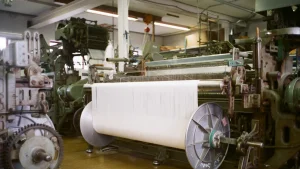
Process Integration
You can achieve the best results from dry strength additives by integrating them thoughtfully into your papermaking process. Start by adjusting your fiber mix. Dry strength additives give you flexibility, so you can use more recycled or lower-cost fibers without sacrificing quality. This approach helps you reduce your reliance on high-quality virgin fibers.
To maximize performance, follow these best practices:
- Adjust your fiber mix to take advantage of the flexibility dry strength additives provide.
- Target high-performance grades by using additives to meet demanding specifications cost-effectively.
- Increase your machine speed. Optimized strength solutions improve drainage and reduce the need for extended drying, which boosts production rates.
- Reduce basis weight while maintaining strength. This strategy lets you use less fiber, supporting both cost savings and sustainability.
- Optimize your chemical usage. New dry strength technologies help you use fewer chemicals, which lowers costs and minimizes environmental impact.
Tip: Integrating dry strength additives early in your process allows you to fine-tune fiber selection and machine settings for the best results.
Dosage
Selecting the right dosage of dry strength additives is crucial for achieving optimal paper properties. You need to consider several factors that influence the effectiveness of these additives. The table below summarizes key variables and their impact on paper strength and production efficiency:
| Factor | Observation |
|---|---|
| Al₂(SO₄)₃ Dosage | Absorbance of filtrate and drainage speed change with Al₂(SO₄)₃ dosage. |
| Optimal Dosage | Best results at 0.6% Al₂(SO₄)₃, 0.2% carrageenan, and 0.03% CPAM for maximum strength. |
| PCC Retention | Retention improved from 22.33% to 49.45% with the additive system. |
| Carrageenan Effect | Optimal at 0.2%, with slight increases in PCC retention. |
| Mechanical Strength | Tighter fiber bonding leads to higher mechanical strength. |
You should always test and monitor the effects of dosage changes. Small adjustments can lead to significant improvements in both strength and retention. Overdosing may cause issues such as poor drainage or increased costs, so aim for the optimal range.
Optimization Factors
You need to consider several variables when optimizing dry strength additives for different paper grades:
- Effectiveness of adsorption and retention of additives on fiber surfaces
- Impact of refining time on fiber properties
- Blending of different fiber types to achieve desired strength and quality
The time you spend refining fibers plays a critical role in the final mechanical properties of your paper. Longer refining times can enhance fiber bonding, but excessive refining may reduce drainage and increase energy consumption. You should balance refining time with additive dosage to achieve the best combination of strength, efficiency, and cost.
Note: Regularly review your process parameters and adjust them as needed. This proactive approach ensures you consistently produce high-quality paper while maximizing the benefits of dry strength additives.
Challenges
Compatibility
You face several compatibility challenges when you introduce dry strength additives into your papermaking process. These additives interact with other chemicals, which can affect both paper quality and machine performance. You must consider how each additive works with sizing agents, retention aids, fillers, and debonding agents. If you do not manage these interactions, you may see reduced effectiveness or even negative side effects.
Here is a summary of common compatibility issues:
| Issue | Description |
|---|---|
| Diminishing Returns | The strength benefits of cationic starch and similar additives decrease with higher dosages. |
| Foaming | Excessive starch in solution can cause increased foaming, signaling that the fiber surface cannot adsorb more. |
| Biological Degradation | Starch performance may drop due to biological degradation, often noticed by foul odors and pH changes. |
| Debonding Agents | Cationic surfactants used as debonding agents can reduce inter-fiber bonding and lower paper strength. |
You need to monitor dosage levels closely. If you add too much cationic starch, you may see diminishing returns and increased foaming. You should also watch for biological degradation, which can lead to inconsistent results and unpleasant odors. When you use debonding agents, you risk weakening the paper if you do not balance them with your strength additives.
Tip: Regularly test your chemical combinations to ensure you achieve the desired paper properties without negative side effects.
Environmental Impact
You must also consider the environmental impact of dry strength additives. Many additives come from renewable resources, such as starch or cellulose derivatives. These options support your sustainability goals. However, some synthetic polymers may persist in the environment or require more energy to produce.
You should evaluate the entire lifecycle of each additive. Look at sourcing, manufacturing, application, and disposal. If you use biodegradable or bio-based additives, you help reduce your operation’s carbon footprint. You also minimize the risk of harmful residues entering water systems.
- Choose additives with low toxicity and high biodegradability.
- Monitor effluent streams for residual chemicals.
- Work with suppliers who prioritize sustainable production.
By selecting environmentally friendly additives, you protect both your business reputation and the planet.
Limitations
You will encounter certain limitations when using dry strength additives. Not every additive works equally well with all fiber types or paper grades. Some additives may not deliver the desired strength improvement if you use a high percentage of recycled fibers. You may also find that the benefits plateau at higher dosages, making further additions uneconomical.
- Additives may not fully compensate for poor fiber quality.
- High dosages can lead to operational issues, such as poor drainage or increased chemical costs.
- Some additives require precise control of pH and temperature for optimal performance.
You need to balance performance gains with cost and process complexity. By understanding these limitations, you can set realistic expectations and make informed decisions for your papermaking operation.
Trends
Innovation
You see rapid innovation shaping the future of dry strength additives in the paper industry. Manufacturers now focus on developing solutions that address both performance and sustainability. You benefit from new additive technologies that improve paper strength, optimize machine efficiency, and support the use of recycled fibers.
You can review the latest advancements in the table below:
| Innovation Type | Description |
|---|---|
| Bio-based and biodegradable additives | You gain access to environmentally friendly options that reduce your environmental footprint. |
| Dual-component systems | You achieve enhanced paper strength by combining different additive technologies. |
| Advanced process control technologies | You improve efficiency and consistency with smarter process monitoring and control. |
You notice that bio-based and biodegradable additives are gaining popularity. These options help you meet stricter environmental regulations and satisfy customer demand for sustainable products. Dual-component systems allow you to tailor strength properties for specific paper grades, giving you more flexibility in your production process.
Note: Advanced process control technologies now play a key role in maximizing additive performance. You can use integrated analytics to monitor your process in real time, making adjustments that improve both strength and efficiency.
Manufacturers have introduced new solutions that combine chemistry with digital analytics. For example, Fusion strength and performance technology integrates advanced additive chemistry with process control analytics. You can address challenges such as higher recycled content and the need for stronger paper grades. This technology gives you the flexibility to adapt to changing operational requirements and market demands.
Sustainability Focus
You recognize that sustainability drives many of the latest trends in dry strength additives. The industry now prioritizes additives that support circular economy principles and reduce environmental impact. You can choose bio-based polymers and biodegradable additives to lower your reliance on fossil resources.
You see several ways sustainability influences your choices:
- You select additives made from renewable resources, such as starch or cellulose derivatives.
- You reduce waste by using additives that enable higher recycled fiber content.
- You minimize emissions and water usage through more efficient additive technologies.
🌱 Tip: When you choose sustainable dry strength additives, you not only improve your product’s environmental profile but also strengthen your brand reputation.
You also notice that regulatory agencies and customers expect you to demonstrate responsible sourcing and production. By adopting sustainable additives, you align your operations with global standards and future-proof your business against evolving regulations.
You can expect continued innovation in this area. Manufacturers invest in research to develop additives that deliver high performance while meeting strict sustainability criteria. You stay ahead of the curve by monitoring these trends and integrating new solutions into your papermaking process.
You gain stronger, more durable paper and lower production costs when you use dry strength additives. These solutions help you increase recycled fiber content and support sustainable papermaking. As you look ahead, focus on eco-friendly and advanced additive technologies. The table below highlights key industry trends and sustainability contributions:
| Key Highlights | Description |
|---|---|
| Market Growth | Packaging and tissue paper drive demand |
| Eco-friendly Additives | Enhance strength and recyclability |
| Technological Advancements | Bio-based and nano-additives improve performance |
| Automation and AI | Boost precision and reduce waste |
| Sustainability Innovations | Green chemistry fosters long-term advantages |
FAQ
What are dry strength additives?
Dry strength additives are chemicals you add during papermaking to increase the strength of paper when dry. These additives help you improve durability, reduce breakage, and support the use of recycled fibers.
How do dry strength additives affect recycled fiber use?
You can use more recycled fibers in your furnish when you add dry strength additives. These additives compensate for the lower bonding ability of recycled fibers, so you maintain or even improve paper strength.
Can dry strength additives impact machine runnability?
Yes, you improve machine runnability with dry strength additives. Stronger sheets reduce web breaks and downtime. You achieve higher production speeds and more consistent quality.
Are dry strength additives safe for food packaging?
Most dry strength additives used in food packaging meet strict safety standards. You should always verify compliance with relevant regulations and certifications for your specific application.
How do you choose the right dry strength additive?
You select the right additive based on your fiber mix, paper grade, and performance goals. Consider compatibility with other chemicals and the desired balance between cost, strength, and sustainability.
Do dry strength additives affect paper recyclability?
You can recycle paper containing dry strength additives. Most additives do not hinder the recycling process. Some even help maintain fiber quality through multiple cycles.
What is the typical dosage for dry strength additives?
You usually add dry strength additives at 0.1% to 1% of the dry fiber weight. The optimal dosage depends on your process, fiber type, and target properties. Always test and adjust for best results.
Are there eco-friendly options for dry strength additives?
Yes, you can choose bio-based and biodegradable additives, such as modified starches or cellulose derivatives. These options help you reduce your environmental impact and support sustainable papermaking.

